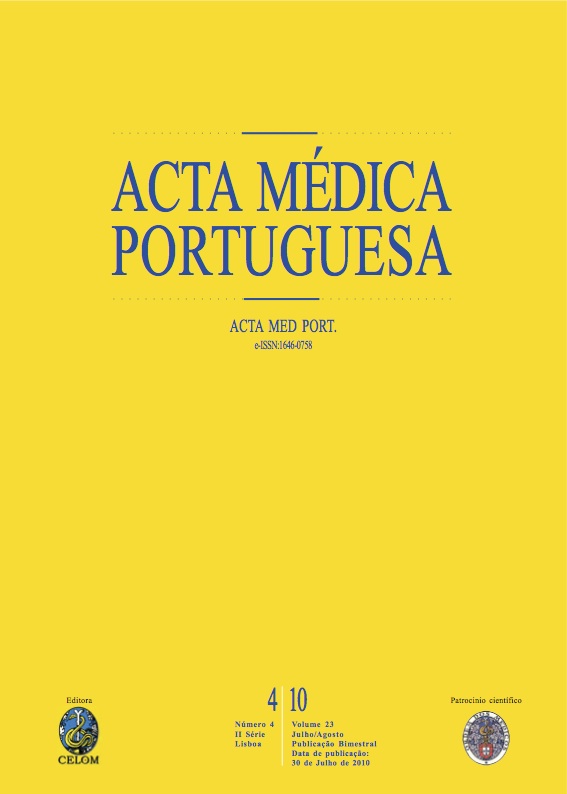Fitas suburetrais transobturadoras na incontinência urinária de esforço feminina: resultados a médio prazo.
DOI:
https://doi.org/10.20344/amp.698Resumo
Minimal invasive surgical treatment of female stress urinary incontinence with suburethral transobturator tapes is completely accepted nowadays. The purpose of this study is to evaluate the efficacy and security of these suburethral tapes, comparing the outside-in to the inside-out approach.We performed a retrospective study of 298 patients with stress urinary incontinence diagnosis that were submitted to transobturator surgery between 2003 and 2006. From these patients 113 women underwent outside-in approach and 185 patients had inside-out approach.The mean-age of the patients was 57.2 +/- 10.3 years-old and 69.1% were in the post-menopausal period. Mean parity was 2.2 +/- 1.1. The outside-in approach was performed more frequently in association with other(s) pelvic floor surgery(ies) (83.2% versus 37.8% for the inside-out technique). The mean follow-up duration was of 14.35 +/- 13.75 months in those patients who had a transobturator outside-in technique and of 11.79 +/- 10.39 months in the inside-out group. In respect to the efficacy, results were identical in the two groups with cure and cure or improvement rates respectively of 76.9% and 92.9% in the outside-in group and of 82.7% and 93.5% in the inside-out group (differences not significative). Regarding mean procedure duration, when it was performed isolated, we had a significant lower duration in patients submitted to inside-out technique (14.77 +/- 5.37 minutes versus 21.21 +/- 7.48 minutes, p < 0.05). The post-operative rates of de novo urge incontinence and mesh erosions were identical in the two groups, however microporous tapes had more erosions than macroporous ones (p < 0.05).The transobturator suburethral tapes are effective and safe for the stress urinary incontinence treatment. We had elevated cure and improvement rates with no significant differences in regard to performed procedure. The inside-out technique is significantly associated to a lower operative duration.Downloads
Downloads
Como Citar
Edição
Secção
Licença
Todos os artigos publicados na AMP são de acesso aberto e cumprem os requisitos das agências de financiamento ou instituições académicas. Relativamente à utilização por terceiros a AMP rege-se pelos termos da licença Creative Commons ‘Atribuição – Uso Não-Comercial – (CC-BY-NC)’.
É da responsabilidade do autor obter permissão para reproduzir figuras, tabelas, etc., de outras publicações. Após a aceitação de um artigo, os autores serão convidados a preencher uma “Declaração de Responsabilidade Autoral e Partilha de Direitos de Autor “(http://www.actamedicaportuguesa.com/info/AMP-NormasPublicacao.pdf) e a “Declaração de Potenciais Conflitos de Interesse” (http://www.icmje.org/conflicts-of-interest) do ICMJE. Será enviado um e-mail ao autor correspondente, confirmando a receção do manuscrito.
Após a publicação, os autores ficam autorizados a disponibilizar os seus artigos em repositórios das suas instituições de origem, desde que mencionem sempre onde foram publicados e de acordo com a licença Creative Commons









